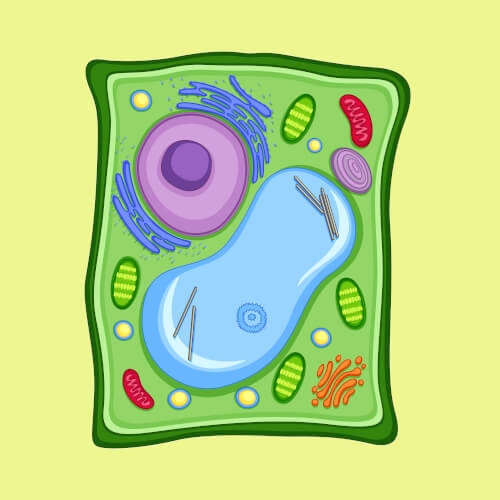


A plant cell is the basic unit of life that makes up the tissues and organs of all plants. Plant cells are eukaryotic cells, meaning that they have a nucleus containing genetic material in the form of DNA.
The nucleus and other components of the cell, called organelles, are surrounded by a flexible cell membrane that acts as a protective barrier. In addition to the cell membrane, plant cells also have a rigid cell wall made of cellulose that provides extra support and protection. Plant cells also contain chloroplasts, which allow plants to make energy through photosynthesis.
Biologists split plant cells into different parts called organelles, meaning "little organs." While plant cells and animal cells share a lot of the same organelles, plant cells have a few that animal cells don't. Here is a list of the main organelles in plant cells:
Onion cells contain a chemical that becomes an irritating gas when it mixes with air. When we cut into an onion, we're actually breaking some of its cells and releasing that chemical. When the gas reaches our eyes, it makes them sting and our body produces tears to wash it away. The more cells we break when cutting an onion, the more that irritating chemical is released!
Plant cells contain a large "vacuole," or storage sac, that takes up most of the cell. This vacuole stores water and nutrients and creates something called "turgor pressure." Turgor pressure is when the insides of the cell push against the cell wall, helping them keep their shape. It's this pressure that helps plants stand tall, and the reason they droop and wilt when they don't have enough water.
One of the largest differences between plant and animal cells is that plant cells have a unique structure called the cell wall. This is the rigid wall that surrounds the cell, keeping the organelles contained and protected within it. In a plant cell, it’s made of a material called cellulose and shaped like a rectangular box. When we bite into vegetables, our teeth break these microscopic cell walls—mmm crunchy!
The word “cell” was first used by the English philosopher Robert Hooke in 1665, when he observed dead cork (the type of oak tree that wine corks are made from) tissue under a microscope. He named what he saw cells because they reminded him of the rooms where monks lived, which were also called cells.